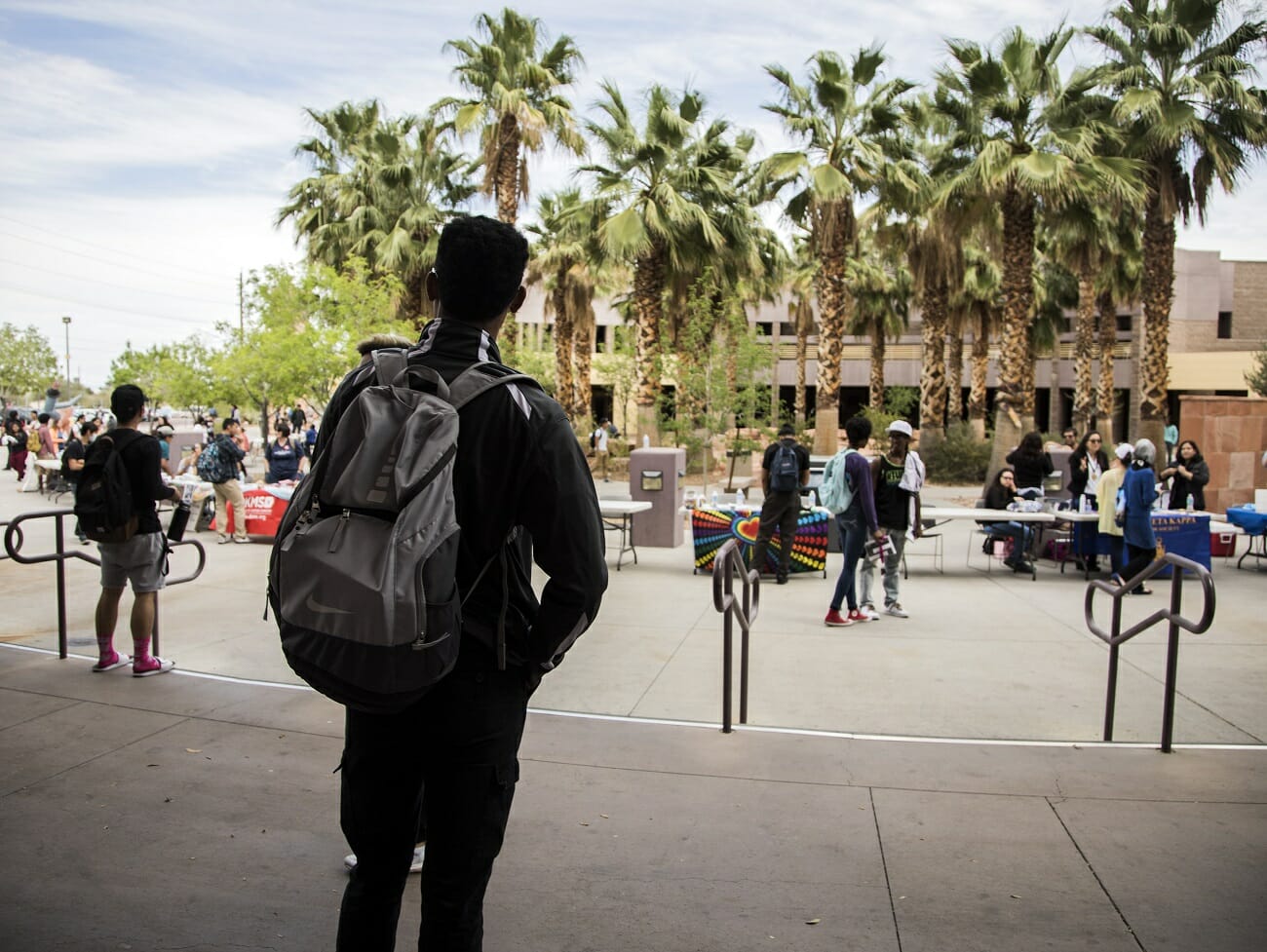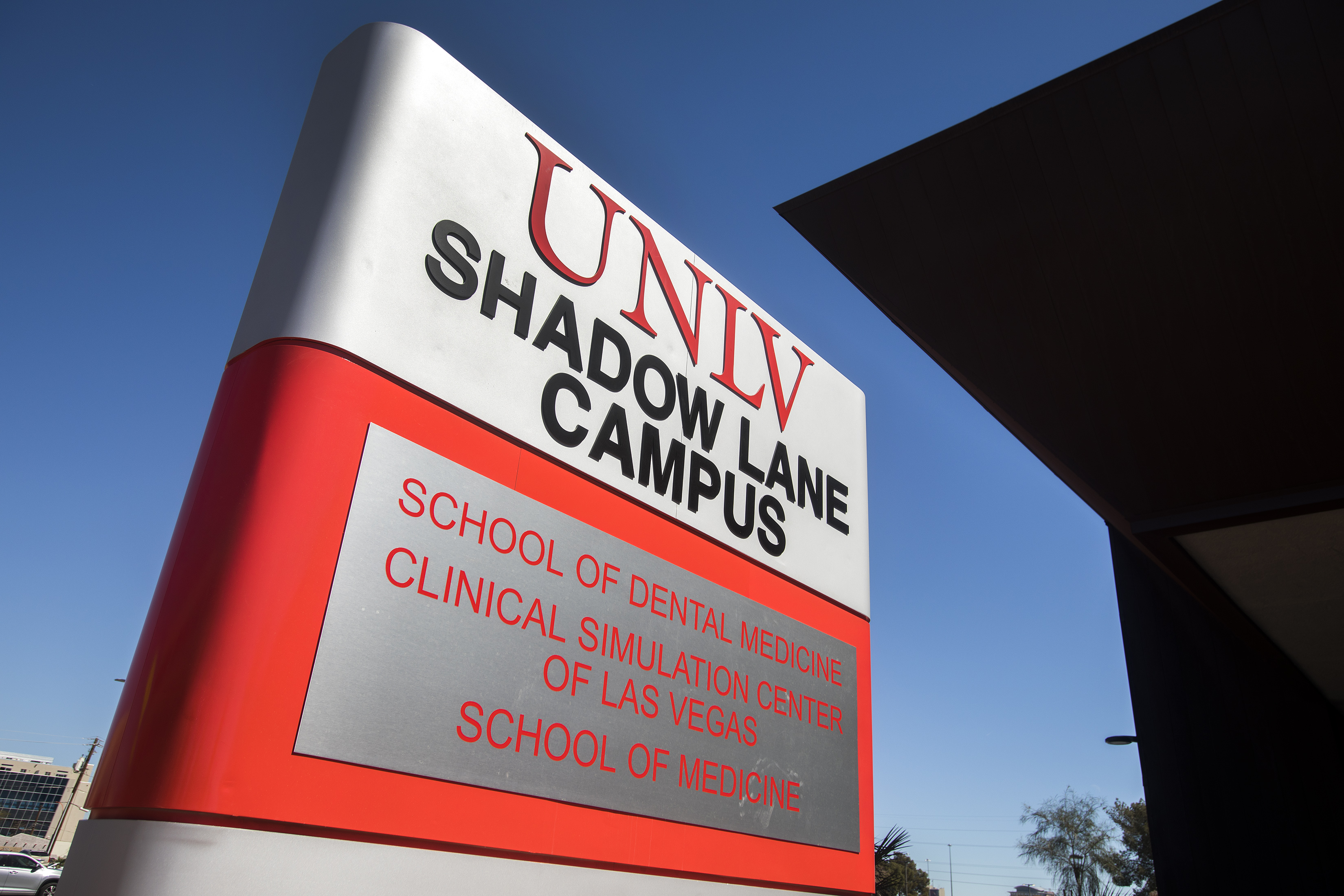Nevada colleges will seek $120 million in additional funding from Legislature as enrollment, programming grows

Nevada’s colleges and universities will ask the Legislature next year for $120 million more than they’re currently receiving in an effort to handle growing enrollment, build capacity for more students and expand summer school offerings.
The Board of Regents voted Friday to approve a $1.5 billion, two-year operating budget request, which will be sent to the governor and considered in the 2019 legislative session.
"We are finally getting back to pre-Great Recession funding levels when adjusted for inflation, which we can use to improve student success and completion rates throughout Nevada,” Chancellor Thom Reilly said in a statement.
Reilly said in an interview that the request was informed by discussions with Gov. Brian Sandoval’s office, which gave the Nevada System of Higher Education parameters for their increased funding request. The system stayed within those confines, but also wrote down some “supplemental” requests that it hopes will be fulfilled if the state’s economy performs better than expected and the Legislature has more discretionary money.
Key elements in the request include:
- Enrollment growth: $41.3 million to support the growing number of students expected in the next two school years. The fastest-growing institution is Nevada State College in Henderson, a four-year school that’s seeing growth of more than 25 percent each year.
- New program development: $40.65 million to continue a five-year “capacity-building” initiative to build and expand new programs to meet the needs of Nevada’s changing economy. Those initiatives include UNLV’s Health for Nevada initiative, which aims to eventually hire 165 new professors in the health care field to expand the medical workforce in Nevada. It also includes an advanced manufacturing initiative at UNR, which involves recruiting 40 new faculty members with expertise in science and engineering.
- UNLV Medical School: $14.3 million to the operations of the UNLV Medical School, which is starting its second school year this fall. The money will help the new school reach the staffing levels that were originally envisioned, and will not go toward buildings.
- Summer school: $15.4 million to increase summer school programming for high-demand fields in science, technology, engineering and math (STEM), as well as career and technical education. The state currently only funds summer school programs for nursing, but Reilly said allowing more students to attend year-round will help them complete their certificate or degree on time.
- Performance incentives: $7.5 million for a “performance pool” that would serve as an incentive for schools to meet goals set by regents that deal with college completion and students continuing their education from one year to the next. Under the existing performance-based system, schools must earn back 20 percent of their base funding by meeting goals. The new model provides a pool of money above and beyond the base, and each school is eligible to unlock their portion of it if they meet the regents’ goals.
Apart from the operating budget, NSHE is requesting $142 million for capital improvement projects. Those include construction of Nevada State College’s education building, a health sciences building that would be used by Nevada State College and the College of Southern Nevada, and the new UNLV engineering building, as well as seven other construction projects at a variety of NSHE schools.
Lawmakers in 2017 had approved funding for the cheaper planning phases of some of those projects.
At the regents’ meeting, Reilly noted that the price tag of the capital improvement projects has shot up in recent months due to a construction labor shortage and competition with other ongoing projects in the state, among other factors. The education building that was supposed to cost $40 million, for example, is now estimated to cost $70 million.

Construction cost inflation was also a concern when UNLV President Marta Meana presented a plan to split a UNLV Medical School building project into two smaller parts. UNLV already has $50 million toward the building project ($25 million from the Legislature and $25 million from an anonymous private donor), and could build a library for $57 million.
Doing that project first — if all goes as planned, it would be finished by 2021 — would allow the university to start the project before construction costs go even higher. A nine-story academic building funded by private dollars would be completed once donations come through; fundraising for the entire, $236 million project has recently stalled.
“I am extremely comfortable with it,” medical school Dean Barbara Atkinson said at the meeting of the divide-and-conquer building approach.
The two-part plan will go before the Legislature’s Interim Finance Committee for final approval in late October.
Beyond the operating budget proposal, NSHE is submitting supplemental requests that it wants legislators to consider if they end the session with more money than expected. One of those is a request for $20 million funding to mitigate “salary compression” — a situation that happens when new faculty are paid the same or more as longtime faculty in comparable positions. The compression comes about because faculty pay was essentially frozen from 2009 to 2015.
NSHE’s supplemental request also requests nearly $19 million in additional money to support a variety of programs, including a prison education initiative, the UNR Cooperative Extension, a cloud seeding initiative, the UNLV Dental School and financial aid for athletes.
“I think this is a milestone,” NSHE Chief Financial Officer Chet Burton said at the meeting as the board closed the books on a long budget-making process. “The finish line is in sight.”
